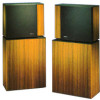Bose 8.2 Stereo Everywhere Owner's guide - Page 4
Speaker, System
 |
View all Bose 8.2 Stereo Everywhere manuals
Add to My Manuals
Save this manual to your list of manuals |
Page 4 highlights
_here Speaker System - III. Connecting the Bose 8.2 Speaker System We recommend using standard zipcord, the wire most commonly carried by audio dealers and electrical stores. 18 gauge zipcord is adequate for lengths up to 30 feet per speaker. Heavier gauges (12 to 14) should be used for anything over this distance. a Press the tab b.Insert shipped end or wire into hole Black, plain, or smooth conductor Red. striped. Or ribbed conductor rgure 2. Connecting the speakers A. Measure the amount of wire required for each speaker and cut it accordingly. If possible, try to maintain roughly the same amount of wire on both speakers. B. Slightly separate the conductors at the end of each wire. Strip off approximately 1/2 inch (12 mm) of insulation from each conductor. C. Examine the wire ends carefully. There will be some visible difference between the two conductors. If the wire is clear, one side may be silver and the other copper. Or, if the wire is not color coded, then one side will be ribbed or striped. In any event, consider the ribbed, striped, or copper side to be positive ( + ). The remaining side (plain, smooth, or silver) is negative ( - ). D. Locate the speaker terminals on the rear of the Part 1(left) speaker. Connect the positive side of the wire to the (,F) red terminal, and the negative side of the wire to the ( - ) black terminal. Refer to Figure 2. 4











